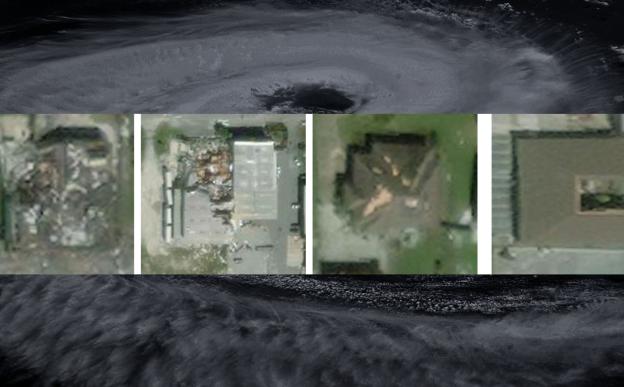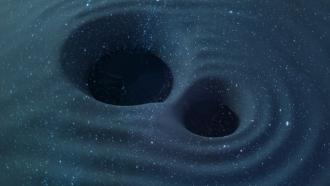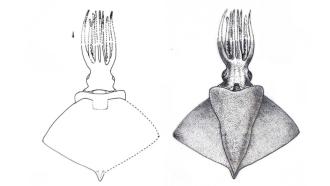
Right now, around 2.5 lightyears away from our Milky Way, the Andromeda galaxy is hurtling towards us. It is expected to collide with the Milky Way in the next 4-5 billion years. In our universe, galaxy mergers are quite common. They are among the most dramatic and consequential events, often sparking furious bursts of star formation and feeding monstrous black holes at their centres. These cosmic collisions are not just spectacular fireworks; they are fundamental architects of the universe’s grand structures, shaping how galaxies evolve over billions of years. Researchers are constantly seeking new examples of such collisions to understand the intricate dance between these merging behemoths and the supermassive black holes residing within them.
Recently, a team of researchers from Ioffe Institute, Russia; Institut d’Astrophysique de Paris, France; Universidad de Chile, Chile; Inter-University Centre for Astronomy and Astrophysics (IUCAA), Pune; the Centre de Recherche Astrophysique de Lyon, France; and Sorbonne University, France, turned their gaze to an extraordinary event unfolding nearly 11 billion light-years away. They observed a system dubbed J012555.11-012925.00, a pair of massive galaxies locked in a gravitational embrace, slowly hurtling towards each other at a staggering 550 kilometres per second.
One of these galaxies hosts a blazing quasar, an active supermassive black hole that feasts on gas and spews out intense radiation. The team discovered that the light from this quasar isn’t just illuminating the scene; it’s actively transforming the very gas within its companion galaxy, dictating whether new stars can be born.
A single quasar can outshine an entire galaxy of hundreds of billions of stars, making them visible across billions of light-years! They are powered by supermassive black holes that can be millions to billions of times the mass of our Sun. |
To study the cosmic collision, the researchers employed some of the world's most powerful telescopes. First, they used the Subaru Telescope in Hawaii to obtain a clear picture of the merging pair. Next, they used the Atacama Large Millimeter/submillimeter Array, or ALMA, in Chile, a network of antennas that can peer through cosmic dust to detect faint radio signals from dense molecular gas. ALMA showed the galaxies were just 5,000 light-years apart in projection, incredibly close for such a massive collision. This also confirmed that both galaxies were truly massive, suggesting a major merger where two roughly equally sized galaxies collide rather than a smaller galaxy being swallowed by a much larger one.
However, these images did not reveal the entire picture. Like trying to see a faint spark next to a blinding spotlight, the quasar’s light was so overwhelming that they had to subtract its glow, a process called Point Spread Function (PSF) subtraction, to reveal the companion galaxy. To do this, they used the European Southern Observatory’s Very Large Telescope (VLT) and its X-shooter instrument to get a spectrum, essentially breaking light down into its constituent colours, like a prism.
The spectra revealed strong absorption lines in the quasar's light, which happens when molecules in the gas absorb specific wavelengths of light, leaving a blank line in the light spectrum. These absorption lines, particularly from molecular hydrogen, acted like a natural coronagraph, allowing them to block the quasar's dazzling central light. This allowed the researchers to see the fainter emission from the gas in the quasar’s own host galaxy and, crucially, the companion.
This technique confirmed that the companion galaxy was indeed in front, and its gas was being stretched and pulled by the powerful gravitational forces of the merger, extending for tens of thousands of light-years. The slight difference in redshift, the stretching of light waves due to the universe's expansion and the galaxies' motion also confirmed they were moving towards each other, setting the stage for a dramatic celestial impact.
The detailed analysis of these absorption lines showed that the gas in the companion galaxy wasn't just ordinary molecular hydrogen. It was highly excited, meaning its molecules were vibrating and rotating with far more energy than typically seen in gas clouds. This extreme excitation was a strong clue that something powerful was disturbing it. Using computer models, the researchers predicted that this highly excited gas would be incredibly dense – about 100,000 to 1 million particles per cubic centimetre. To put that in perspective, even the densest molecular clouds in our galaxy are usually only a few thousand particles per cubic centimetre. And despite this incredible density, the gas was confined to minuscule cloudlets, less than 0.02 light-years across, a size 100,000 times smaller than what our current telescope observations can resolve.
Why so small and dense? The answer lies in the quasar's ferocious radiation. The models showed that the molecular gas was being blasted by an ultraviolet (UV) field a thousand times stronger than the average UV field in our Milky Way. This intense UV light acts like a cosmic shredder, a process called photodissociation, breaking apart the molecular hydrogen.
Only the densest pockets of gas, those tightly packed cloudlets, could withstand this onslaught and survive. The quasar was dissolving the vast, diffuse molecular fog of the companion galaxy, leaving behind only the most resilient, super-compact clumps. The absence of the more common, lower-density molecular clouds, which usually vastly outnumber the high-density ones, strongly supports this photodissociation scenario.
This finding reveals a direct example of negative feedback from a quasar. While galaxy mergers are often thought to trigger star formation by compressing gas, this study shows that the quasar, ignited by the merger, can then counteract that process. The surviving gas cloudlets, though dense, are far too small (less than one-tenth the mass of our Sun) to collapse under their own gravity and form new stars.
The quasar's radiation has effectively sterilised its surroundings, preventing widespread star birth in the very region where it’s exposed to the quasar’s glare. Meanwhile, parts of the companion galaxy not directly bathed in the quasar's intense light are likely still forming stars at a rapid pace, showcasing the dual nature of these energetic events. This is akin to a newborn star's intense radiation pushing away the very gas cloud it formed from, preventing other stars from forming nearby, but on a galactic scale.
The research offers an unprecedented close-up view of how supermassive black holes influence their host galaxies. Previous studies had hinted at quasar feedback on larger scales, but this work directly demonstrates its impact on the fundamental building blocks of star formation—the molecular gas clouds—at scales previously unobservable with such detail.
While the work significantly advances our understanding, it's important to note that some parameters, such as the exact details of the dust distribution, were challenging to constrain perfectly due to the immense distances and limited observational data. However, the core findings regarding the extreme density and small size of the surviving gas clumps, as well as their high excitation, remain robust. It paints a more nuanced picture of galaxy evolution, where the chaotic dance of mergers can both fuel star formation and, through the ignited quasar, suppress it locally. These extreme conditions observed here, in a very bright quasar and closely merging galaxies, provide crucial data points for refining our cosmological models, helping us understand how the universe built its vast tapestry of galaxies.
The article was edited to fix typos in the title. The error is regretted
This research article was written with the help of generative AI and edited by an editor at Research Matters.






